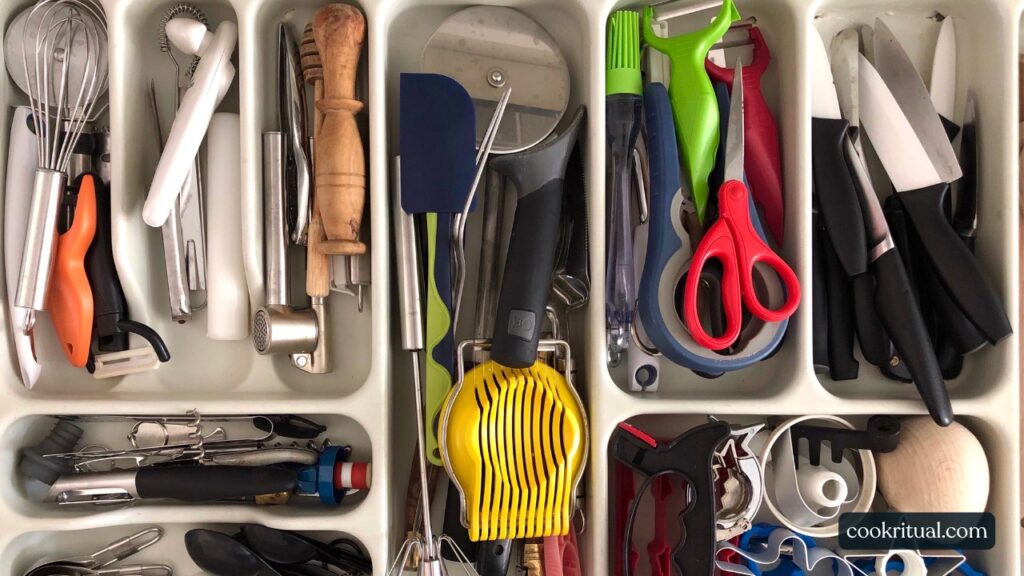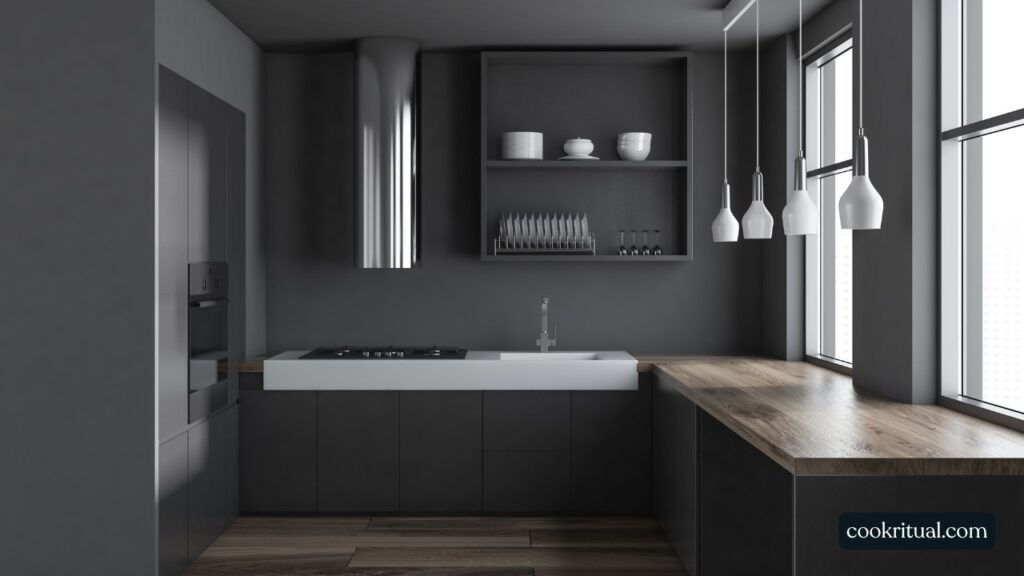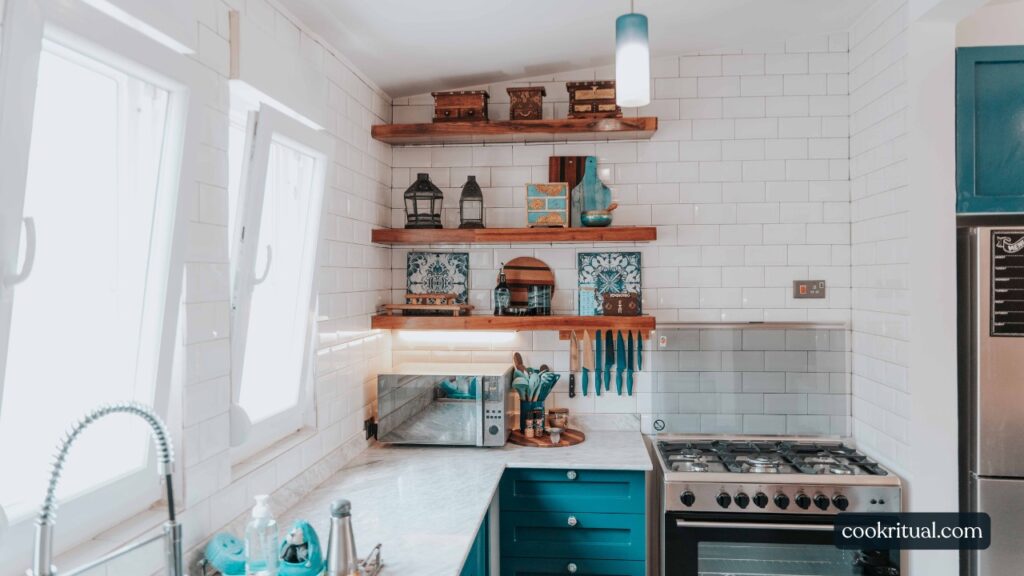A minimalist kitchen setup can help us cook more efficiently, stress less, and enjoy a clutter-free space—without sacrificing style or function.
In today’s fast-paced world, our kitchens often become overwhelmed with gadgets, mismatched containers, and half-used tools that make cooking more chaotic than calming. For health-conscious individuals and busy professionals, creating a simple and purposeful kitchen is one of the most effective ways to bring ease and enjoyment back into meal prep.
The minimalist approach isn’t about having less for the sake of it—it’s about choosing wisely and keeping only what truly supports our cooking and wellness goals. Whether we’re making a quick post-work dinner or planning a week of healthy meals, a well-arranged, low-clutter kitchen helps us focus on what really matters: good food, good health, and a little peace of mind.
In this guide, we’ll walk through everything we need to know to transform a cluttered kitchen into a minimalist, functional haven—from decluttering strategies and must-have tools to storage ideas and layout tips. Let’s simplify our space so we can savor the joy of cooking again.
Contents
- 1 2. Understanding the Principles of a Minimalist Kitchen
- 2 3. Decluttering First: The Essential Step
- 3 4. Choosing Minimalist Kitchen Essentials
- 4 5. Smart Organization: Space-Saving & Storage Tips
- 5 6. Functional Layout Ideas for Minimalist Kitchens
- 6 7. Decor Tips: Clean, Calm, and Cohesive
- 7 8. Cabinets vs. Open Shelving: Which Suits Minimalism Best?
- 8 9. Maintenance Tips for a Minimalist Kitchen
- 9 10. Common Mistakes to Avoid in Minimalist Kitchen Design
- 10 Conclusion: Embrace Simplicity and Cook with Joy
2. Understanding the Principles of a Minimalist Kitchen
What Makes a Kitchen Truly Minimalist?
A minimalist kitchen is clean, simple, and easy to use. It’s not just about having fewer things—it’s about keeping only what we need and use often. The goal is to create a space that feels open and calm.
Instead of overflowing cabinets or crowded counters, everything has its place. The layout is functional, and the design is free from visual noise. This means fewer distractions and more room to focus on healthy cooking.
Think of it like a calm retreat where meals come together smoothly. If we choose the right tools, store them wisely, and remove the extras, we can enjoy cooking again—without the clutter or stress.
To learn more about the benefits of minimalism in daily life, check out this guide from The Mayo Clinic.
3. Decluttering First: The Essential Step
Step-by-Step: How to Declutter Kitchen Space
Before organizing, we need to clear the clutter. It’s the first and most powerful step. A zero clutter kitchen gives us more room to prep, cook, and clean with ease.
Here’s how we can start:
- Empty one area at a time – Choose a drawer, cabinet, or shelf.
- Group similar items – Keep tools, containers, and pantry goods together.
- Decide what to keep – Ask: Do I use this weekly? Does it serve more than one purpose?
- Donate or toss duplicates and unused tools
- Wipe down surfaces before restocking
Stick to the essentials. If we haven’t used it in months, we probably don’t need it.
For more tips on kitchen decluttering, visit Harvard Health’s organization tips.
4. Choosing Minimalist Kitchen Essentials
Only Keep What Truly Matters
A capsule kitchen setup works best when we have just the right tools—not too many, not too few. The goal is to make cooking faster and easier, with tools that serve multiple functions.
Here’s a sample list of minimalist kitchen essentials:
- A sharp chef’s knife
- One or two quality cutting boards
- Mixing bowls (preferably nesting)
- A saucepan and a skillet
- Measuring cups and spoons
- A baking sheet
- A wooden spoon and silicone spatula
- A blender or food processor (optional)
We can always build from this core. But starting with these basics keeps the kitchen simple and functional.
According to the U.S. Department of Agriculture (USDA), having the right kitchen tools makes healthy meal prep easier and helps reduce food waste.
5. Smart Organization: Space-Saving & Storage Tips

Simple Ideas to Maximize Kitchen Space
Smart kitchen storage helps keep everything neat and easy to find. It also saves time and makes meal prep smoother.
Here are some space-saving tips we can try:
- Use vertical space with wall hooks, hanging racks, or magnetic strips
- Add drawer organizers to separate tools and utensils
- Use stackable containers for dry goods and leftovers
- Install under-shelf baskets for extra pantry storage
- Store rarely used items on high shelves or in cabinets
If we can see what we have, we’ll use it more and waste less. Clear containers and labels make it easier to grab what we need fast.
Check out the National Institute on Aging’s kitchen safety guide for tips that also improve functionality in small kitchens.
6. Functional Layout Ideas for Minimalist Kitchens

Make the Most of Any Kitchen Size
A functional kitchen layout helps us move easily between prepping, cooking, and cleaning. Whether our kitchen is big or small, we can create a smooth flow with smart design.
The key idea is the work triangle: the space between the stove, sink, and fridge. Keeping this area clear and balanced cuts down on steps and stress.
Here are a few layout tips:
- Keep tools near where they’re used (e.g., knives near cutting boards)
- Store pots and pans close to the stove
- Group pantry items by type for faster meal prep
- Avoid overfilling drawers or shelves—leave some breathing room
Even in small space kitchen design, we can create a better layout with a few simple changes. A clutter-free surface makes cooking more enjoyable.
Want more on kitchen layout planning? Visit this expert resource from HGTV for helpful diagrams and options.
7. Decor Tips: Clean, Calm, and Cohesive
How to Style a Minimalist Kitchen
Minimalist kitchen decor should feel light, clean, and welcoming. The style isn’t cold or boring—it’s calm and cozy.
To get that look, try these simple tips:
- Stick to neutral colors like white, gray, beige, or soft pastels
- Choose materials like wood, ceramic, and matte metals
- Keep counters clear, with just one or two display items
- Add a touch of green with a small kitchen-safe plant
- Use matching containers or jars for a cleaner visual flow
Minimalist kitchen color schemes help reduce visual clutter and boost focus while cooking. A soft palette makes the space feel bigger and brighter.
Learn more about how color affects mood and focus from Verywell Mind.
8. Cabinets vs. Open Shelving: Which Suits Minimalism Best?

Choosing the Right Storage Style
Both cabinets and open shelves can work well in a minimalist kitchen. The best choice depends on the space, style, and how we cook.
Cabinets keep things out of sight. They’re great for hiding clutter and keeping a sleek look. Use them for bulk storage, rarely used tools, or cleaning supplies.
Open shelving works best for daily items—like plates, glasses, or jars. It creates a light, airy feel and encourages us to keep things neat.
To keep open shelves clean and functional:
- Use matching containers or jars
- Limit items to the essentials
- Clean dust or splatter often
For a detailed guide on kitchen shelving and organization, visit Better Homes & Gardens.
9. Maintenance Tips for a Minimalist Kitchen
Keeping It Clean and Clutter-Free
A minimalist kitchen stays simple only if we keep it that way. The key is small daily habits that prevent clutter from coming back.
Try these tips:
- Reset the kitchen every night—put items back where they belong
- Do a 10-minute declutter each week
- Limit new kitchen items unless we truly need them
- Clean counters right after cooking
- Empty the fridge weekly to avoid food waste
Clean kitchens help us feel calm and ready to cook. They also support healthy eating habits, as shown by the Cleveland Clinic.
10. Common Mistakes to Avoid in Minimalist Kitchen Design
Don’t Overdo It or Miss the Basics
Minimalism doesn’t mean having nothing—it means having just enough. But it’s easy to make mistakes when first trying a minimalist kitchen design.
Watch out for these:
- Removing too much—Don’t get rid of items we use often
- Choosing style over function—Always think about how we cook
- Forgetting about storage—Minimalism still needs smart solutions
- Using too many colors or patterns—Keep the look calm and simple
Our goal is a kitchen that works well and feels good. A little planning goes a long way.
Read more about common design mistakes at Architectural Digest.
Conclusion: Embrace Simplicity and Cook with Joy
A minimalist kitchen helps us cook better, feel calmer, and enjoy the space more. It’s not about having less—it’s about making room for what matters.
By clearing clutter, choosing smart tools, and organizing with care, we can turn any kitchen into a peaceful, practical place. Whether we’re meal prepping for the week or making a quick dinner, a clean and simple kitchen makes it all easier.

